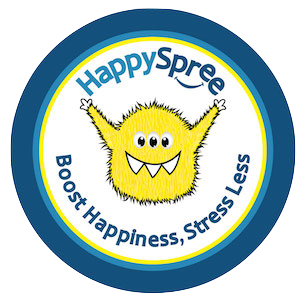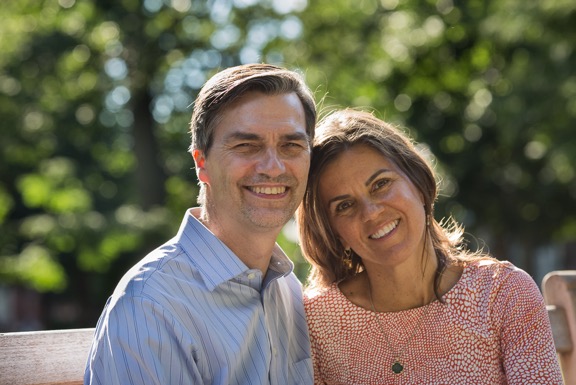Well-being experts Suzann Pileggi Pawelski (MAPP) and James Pawelski (PhD) didn’t expect their book Happy Together: Using the Science of Positive Psychology to Build Love That Lasts to cause a breakup with my fiance, and neither did I. When I bought their book I had hopes of strengthening my romantic relationship. I knew something felt wrong, but I didn’t know what.
Happy Together taught me that great romantic relationships use John Gottman’s “magicratio” of 5-1 positive to negative interactions. Relationship researcher, Gottman, discovered that for happy relationships every negative comment, or action, needs 5 (or more) positive comments or actions. That night I tested my relationship …
Ought-oh …
We had 12 negative interactions for every positive. After realizing this I tried to fix our ratio but couldn’t, so I ended that relationship and cried on the bathroom floor.
That got boring after a while. I decided to use my character strength of bravery to began my quest for a realistic happily ever after using the Pawelski’s relationship research. “We wrote our book to help couples create loving, long-term romantic relationships using the science of happiness,” says Suzanne (“Suzie”) Pawelski. After discovering how to create and sustain their happy marriage they wanted to inspire others to do the same.
The Pawelskis teach us to grow our relationship calmness, commitment and trust by cultivating “Aristotelian love” . To do this, couples identify their character strengths and then help each other grow their strengths. This sounded interesting to me ,and I’m excited to try it.
Don’t know your strengths? Take the free VIA Character Strength Survey to discover them. Here’s a wordcloud of my strengths.
Helping your partner grow strengths creates deep and connected love. This also means together you create your best possible relationship future.
Additionally, the book reveals that positive relationships take work. “Pop culture does us a disservice, all of the attention is on getting together and planning a wedding, and no one teaches what to do the day after the wedding,” says Suzie. Remember all of the decisions needed for a wedding–the dress, flowers, venue, menu, etc,? Suzie recommends pouring similar effort into your relationship regularly, not just on one day. She states the most robust research shows a happiness habit doesn’t “just happen”. It takes regular work.
She invites us to join her and James in the “relationship gym”. Similar to how exercise gyms create healthy bodies, growing a relationship creates love and happiness.
The Pawelskis teach couples to evolve the fiery passion of new love into a calmer, healthy passion. This is because the initial passion of new romance cools, and to expect it to continue can create obsession. To keep things fresh, Suzie recommends practicing positive emotions as your relationship develops; for instance, choosing activities to enjoy together, such as hiking, to create gratitude and awe. Positive emotions create connection and happiness. “Relationships without a lot of positive emotions often fizzle out,” she says.
Suzie does caution about chasing too much happiness, though. Sometimes we need to feel appropriate negative emotions, such as when our dog does. So strive for realistic happiness and positive emotions when appropriate.
A fun way to cultivate positive emotion is a “strengths date”, an activity developed by positive psychology founder, Martin Seligman. To plan a strengths date, choose a character strength from each person and plan a fun event that uses the strengths. For instance, Suzie combined her creativity with James’ love of learning for a date to a Purivian and Cantonese restaurant. Before the date she researched the Latino and Asian culinary background, printed out the information, and brought it to dinner for them to discuss while savoring their food. They loved their evening and she encourages others to strengthen bonds with similar activities.
She recommends taking time for mindful savoring. “Couples rush through life and miss magical moments to connect while waiting for momentous events to happen,” she says. If your partner isn’t whisking you off to Paris, like on The Bachelor, it’s ok; research shows daily happy moments add up. “For more happy moments, seek out strengths in your partner and how to facilitate them,” she says.
Also, don’t be a killjoy. For instance, if you’re vacationing in California enjoy your moments together and don’t think, maybe we should have gone to Hawaii. “Celebrate your good times together and appreciate what’s in front of you,” says Suzie.
But what happens when bad times occur? Couples that work to build up happy times can more easily weather challenges. Also happy couples know they can rely on each other to problem-solve. One way to do this is to use character strengths.
Suzie says the most important takeaway from her book is to focus on what is going right in a relationship. She says, “When everyday annoyances happen remember what your partner’s strengths are and what attracted you to them in the first place.” So help your partner be their best to create Aristotelian love and a realistic happily ever after.
I found ideas in Happy Together immensely valuable, and give the book 5-stars. I’m excited to try out these ideas in my next relationship.




